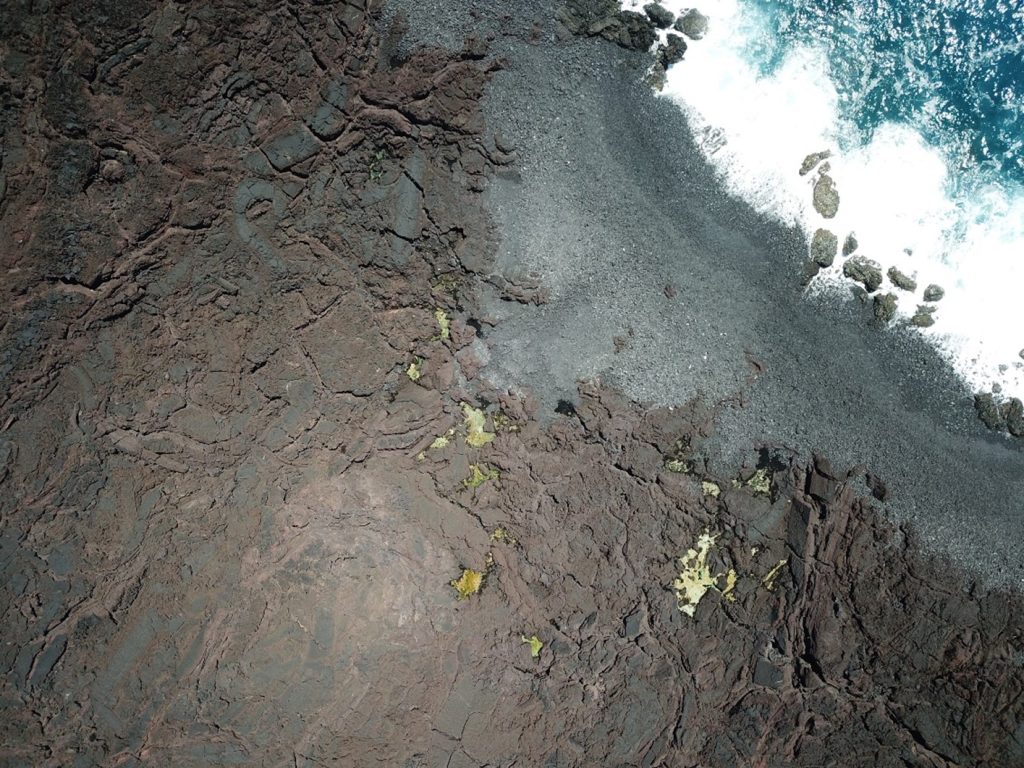5/16/23 – Venturing far to find new coastal aquatic habitats on Hawai‘i Island
By Troy Sakihara – East Hawaiʻi District Biologist
In 2018, the lower Puna eruption on Hawai‘i Island formed an entirely new section of eastern coastline. While this globally recognized event had devastated many homes and properties and impacted families, it has also become a platform for sprouting new life. This affords a unique opportunity to see the natural beginnings of coastal ecosystems, and how they develop and possibly change over time.
Of notable interest are new anchialine pools, or wai ‘ōpae, that have been forming in remote and difficult-to-access portions of the expanded coastline (see DAR blog on 11/7/22 for a description of anchialine habitats). Prior to the lava flow, the ahupua‘a of Kapoho had one of the highest concentrations of anchialine pools in East Hawai‘i, thanks to the porous volcanic terrain and vast amounts of groundwater discharging along the coast. It is therefore exciting—but not surprising—that new pools have formed shoreward of these former habitats, which are already thriving with native shrimps like the endemic ‘ōpae ‘ula and indigenous Metabetaeus lohena. What is more fascinating, however, are the unusual aquatic microbes that have been observed by DAR and fellow researchers in Hawai‘i for the first time. Are these peculiar microbes a typical phenomenon in new anchialine habitats? DAR along with colleagues are trying to answer this question while monitoring how these habitats may change biologically over time.
Despite these intriguing findings, the rugged environment and remoteness of these habitats make it considerably challenging to survey and to search for other such habitats. Recently, DAR has taken to the skies with a small drone to fly deep into the lava field to search for new pools supporting anchialine species. And indeed, there are—lots of them! Now that we know these pools exist, we have the challenging task ahead of us to conduct biological sampling on the ground. But now with a bird’s-eye view of these pools, we can strategically target these areas for on-the-ground surveys, improving our efficiency, data collection and safety in the field.

Photo taken from DAR’s sUA of new anchialine pools deep in the 2018 Kapoho Lava Flow, Hawai‘i Island. White-colored pools indicate the growth of newly observed microbes. Orange colored pools are established with cyanobacteria, typical of anchialine pool habitats.

Close-up underwater shot of white microbial growth in a new anchialine pool in Kapoho, Hawai‘i Island. This is the first time DAR biologists and colleagues have observed this type of microbial growth.

Close-up of ‘ōpae ‘ula Halocaridina rubra grazing on the rocks in the foreground with white microbial growth blurred in the background. Kapoho, Hawai‘i Island.
This work is funded by the US EPA Wetland Program Development Grant, No. 98T31401.
